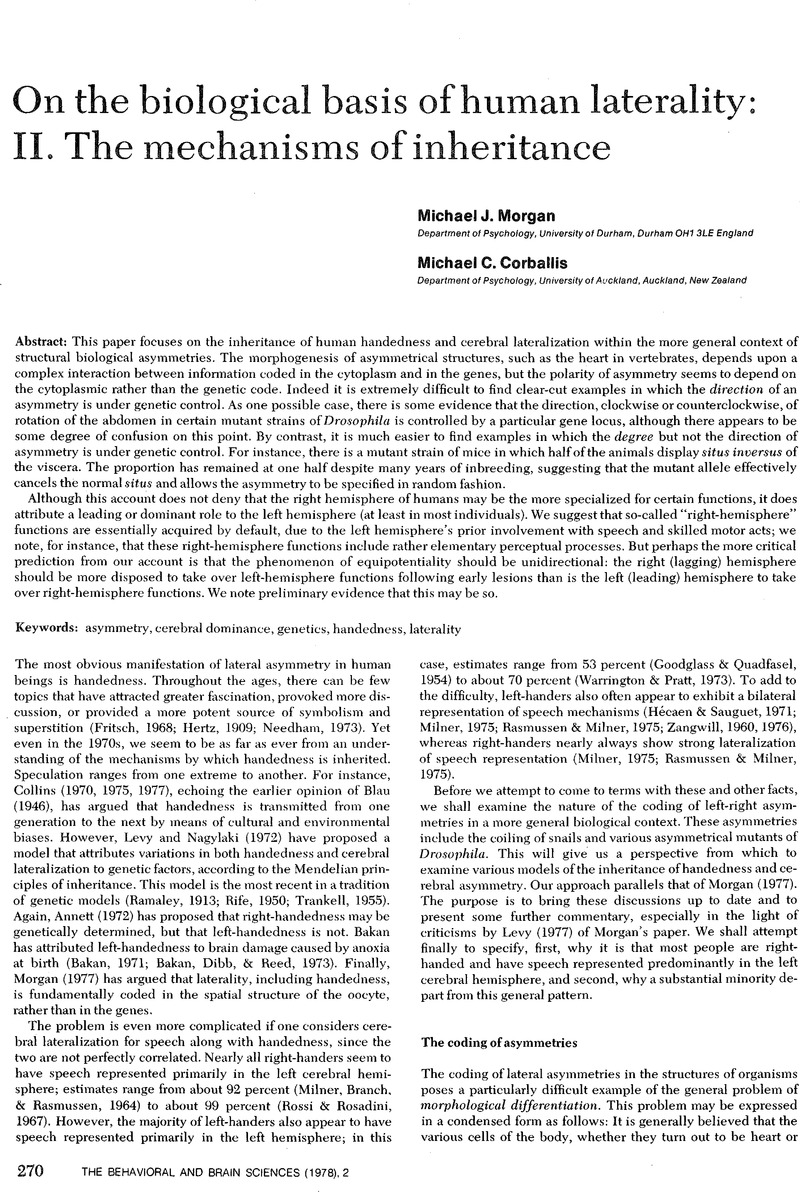Crossref Citations
This article has been cited by the following publications. This list is generated based on data provided by Crossref.
HARRIS, LAUREN JULIUS
1983.
Manual Specialization and the Developing Brain.
p.
177.
Boklage, Charles E.
1984.
On the inheritance of directional asymmetry (sidedness) in the starry flounder, Platichthys stellatus: Additional analyses of Policansky's data.
Behavioral and Brain Sciences,
Vol. 7,
Issue. 4,
p.
725.
Harris, Lauren Julius
1984.
Louis Pierre Gratiolet, Paul Broca, et al. on the question of a maturational left–right gradient: Some forerunners of current-day models.
Behavioral and Brain Sciences,
Vol. 7,
Issue. 4,
p.
730.
McManus, I. C.
1984.
The inheritance of asymmetries in man and flatfish.
Behavioral and Brain Sciences,
Vol. 7,
Issue. 4,
p.
731.
Policansky, David
1984.
Do genes know left from right?.
Behavioral and Brain Sciences,
Vol. 7,
Issue. 4,
p.
733.
Corballis, Michael C.
1984.
Human laterality: Matters of pedigree.
Behavioral and Brain Sciences,
Vol. 7,
Issue. 4,
p.
734.
Ocklenburg, Sebastian
Peterburs, Jutta
and
Mundorf, Annakarina
2022.
Hemispheric asymmetries in the amygdala: A comparative primer.
Progress in Neurobiology,
Vol. 214,
Issue. ,
p.
102283.





